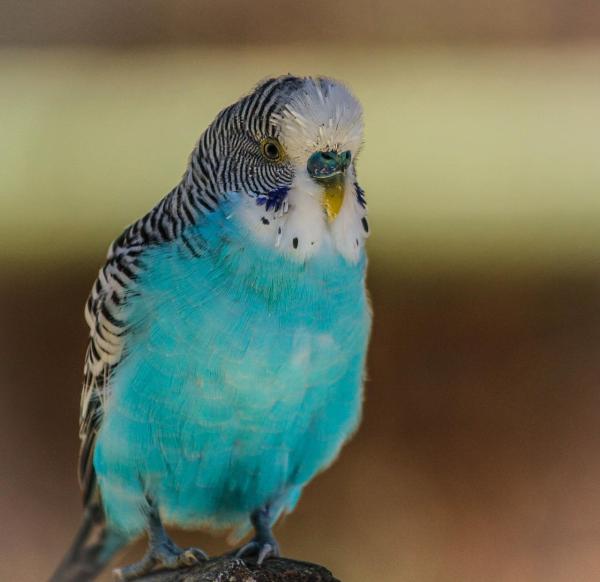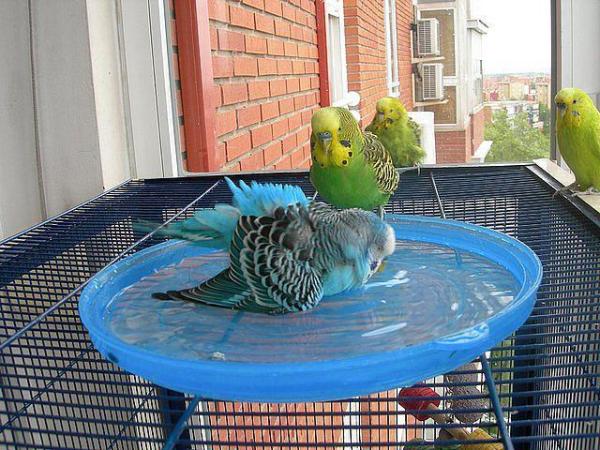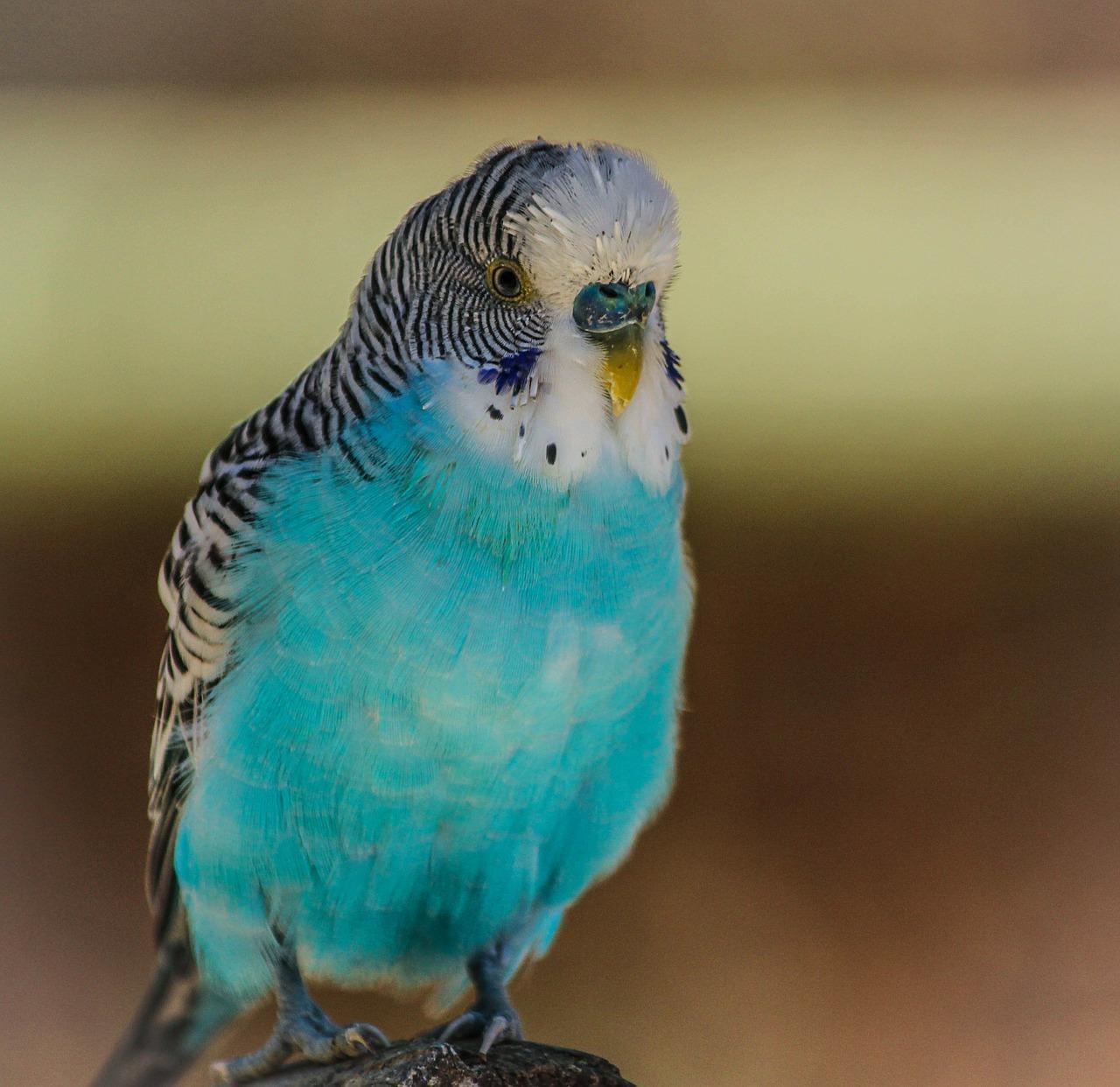Caring for a Budgerigar


The common or shell parakeet, also known as the Australian budgerigar, has become a very familiar pet all around the world. In fact, the budgie is the world's most popular domestic bird.
Budgerigars are as intelligent as some large parrots and they can be domesticated without a problem. They are able to learn to perch on your hand, play with certain objects, and repeat words or imitate actions. Budgies love company, and they are happy animals overall.
If you have this fantastic bird, or are planning to adopt one, don't hesitate to stay at AnimalWised and read all about caring for a budgerigar.
Creating an habitat for a budgerigar
Choosing the best cage for your budgie is very important because it will spend most of the day inside it. Parakeets need a cage at least 50 centimeters (20 inches) wide, bearing in mind they fly horizontally, so we recommend a wider cage rather than a tall and thin one. Of course, the cage should be bigger if you're thinking of getting another bird. It is recommended to have more than one budgie; however, having two females is not a good idea. Learn why in our article on the differences between male and female budgerigars.
When setting up the cage, it's beneficial to use branches of fruit trees, which are available in many pet shops, as perches. These natural perches are fantastic for them because they help exercise their feet on different sized branches.
Always provide a feeder for your budgerigar inside the cage if possible, as well as an adequate water feeder; both feeders must always be kept fresh and clean. At the bottom of the cage, you must also add a special type of lining with calcium deposits to properly stimulate the bird and maintain hygiene.
Cage accessories for a budgie should match the size of its cage. In other words, don't put in too many toys and perches if the animal will have no space to move. If you want a very ornate cage, think carefully before buying a large one. Include a swing, ropes, or ladders to keep your budgie entertained and active.
The location of the budgie's cage, as is the case with other birds, should always be in a place free from smoke, direct sunlight, drafts, or excessive noise. Look for a calm, cool, and harmonious place so your pet will feel happy and at ease. You can also keep your budgerigar outside, keeping in mind that they must have shade, with no exposure to excessive heat or cold, and be protected from the rain. Additionally, ensure that outdoor cages are secure from predators.

What is the best diet for a budgerigar?
The basic diet of a budgerigar is primarily comprised of canary seed and millet. You can find ready-made mixes in the supermarket; as we mentioned, the budgie is a very common pet bird.
It is also essential to add a cuttlefish bone or a piece of calcium, and from experience, we recommend the former. Learn all about its nutritional properties here.
For extra food, you can offer lettuce leaves, which they love. Furthermore, you can try to give them small pieces of fruit such as pear, apple, and watermelon. Vegetables are also an option, as parakeets love chard, peas, corn, and carrots.
When offering fruits and vegetables, it's important to wash them thoroughly to remove any pesticides. You can also introduce your budgie to grains like quinoa and cooked rice, which provide additional nutrients.
You can also offer your budgie alfalfa, adored by most birds, but restrict its intake as it can be quite calorific. It's crucial to remember that variety is key in their diet to ensure they receive all the necessary nutrients.

Maintaining the cage's hygiene
It is essential that the cage and all the items within it are regularly cleaned. The accumulation of excrement and rotten food can cause a variety of diseases for your pet.
Check the budgie from time to time to make sure it doesn't have parasites (with special attention to the wings). You can get rid of insects with insecticide available in pet stores. Don't worry, it doesn't hurt the bird, but always follow the instructions carefully.
Although budgerigars are very clean animals, you must provide something extra to prevent disease. In shops, you can find small swimming pools for birds to soak in, something they love to do, especially in summer. If you can't find one, you can use a small plastic container that your bird can easily access and fill it with water. You can also use a spray bottle to mist them gently, which can help in maintaining their feather health.
If you see any sign of disease, it is important to go to the vet promptly. Regular check-ups with a vet can also help in preventing issues before they become serious.

If you want to read similar articles to Caring for a Budgerigar, we recommend you visit our What you need to know category.








